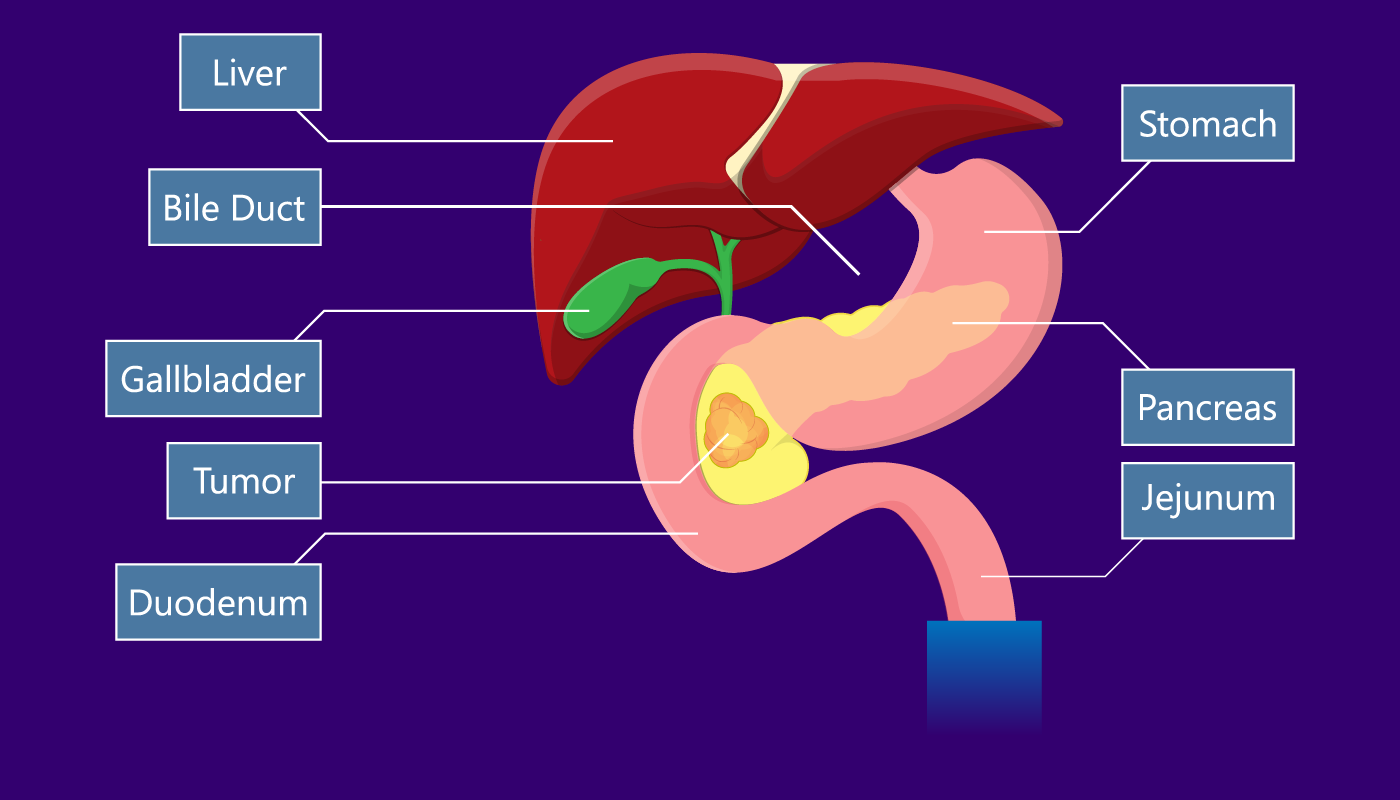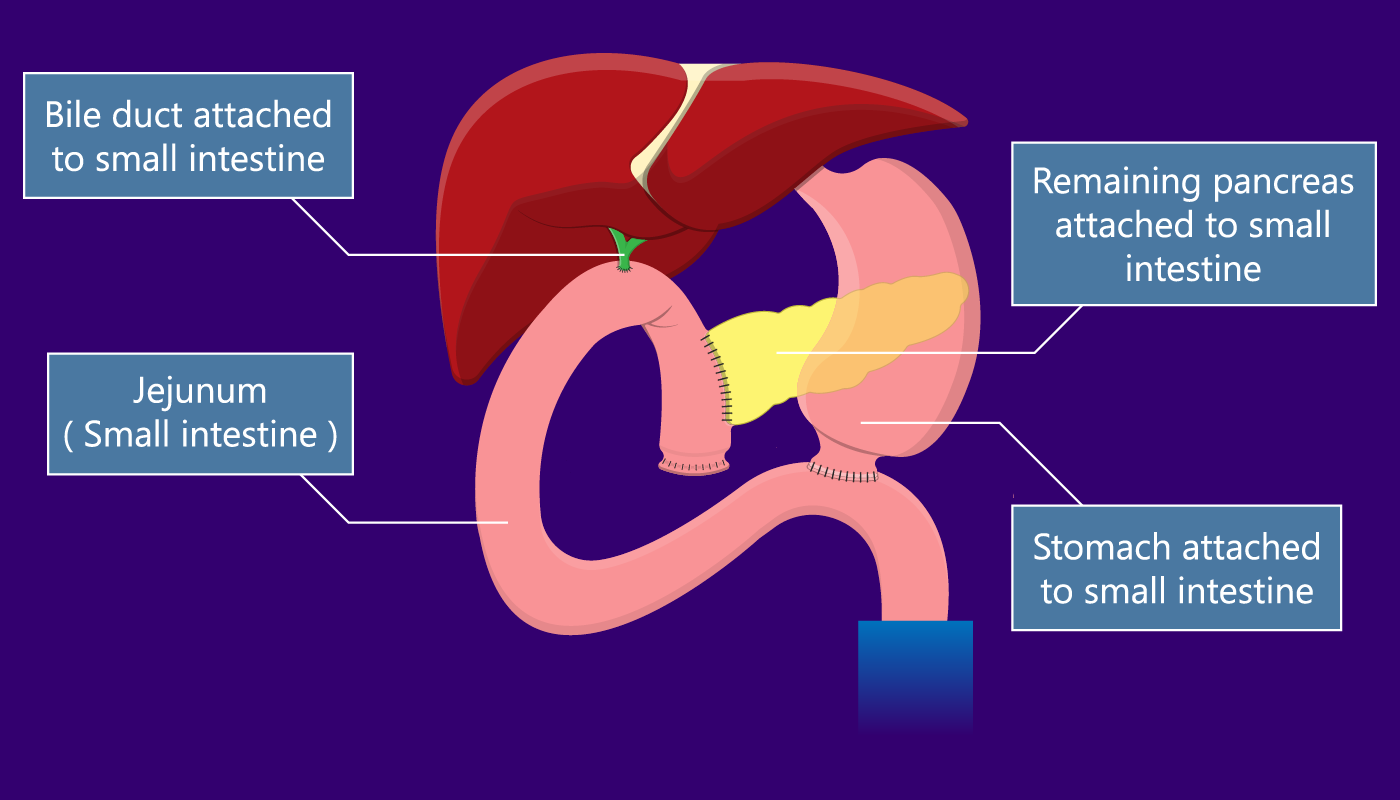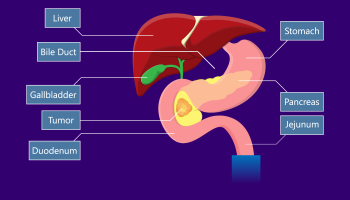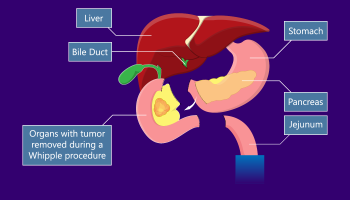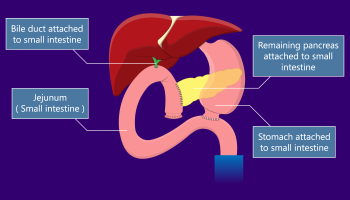A pancreaticoduodenectomy, also known as the Whipple procedure, is a surgical procedure to remove the head of the pancreas, the duodenum (first part of small intestine), gallbladder, and bile duct. Once those organs have been removed, the surgeon reconnects the remaining organs to allow for normal digestions after surgery.
This complex procedure is used to treat tumors and disorders of the pancreas, intestine, and bile duct. It is most commonly used for pancreatic cancer.
